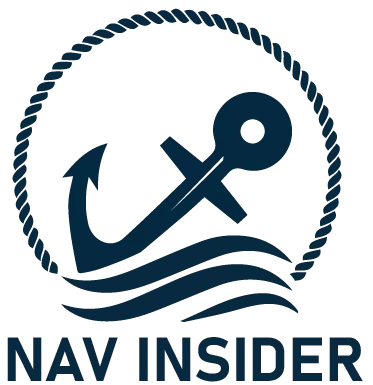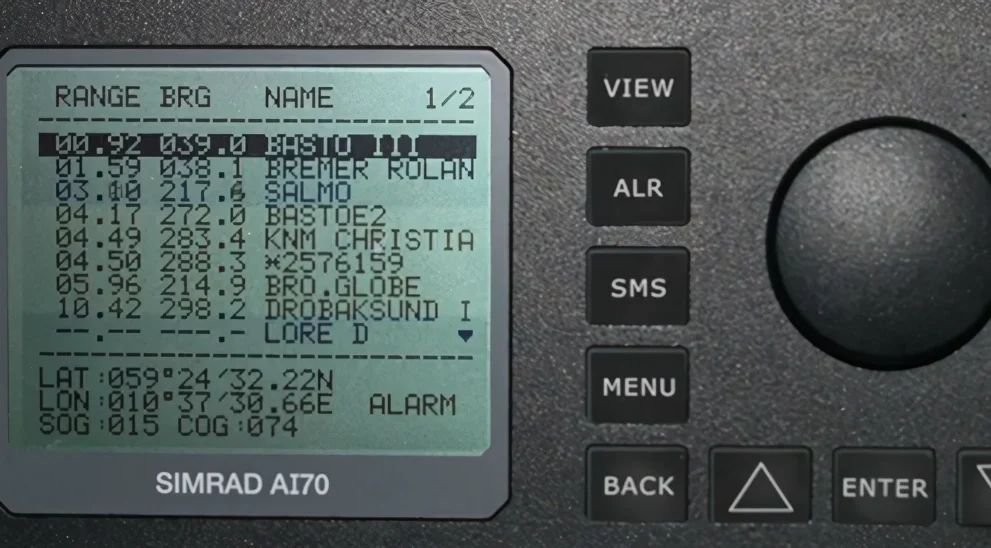Understanding AIS – The Eyes of the Sea
In today’s tech-driven shipping world, AIS (Automatic Identification System) works like a digital handshake between ships. It’s not just a gadget — it’s a key player in modern navigation. By constantly sharing who’s around, where they’re heading, and how fast they’re moving, AIS helps vessels “see” each other clearly — even through thick fog, darkness, or heavy seas. Thanks to SOLAS regulations, AIS has now become a must-have on the bridge of nearly every large ship sailing across international waters.
How AIS Actually Works
AIS uses VHF radio to transmit and receive important information from ships and shore stations. Real-time data is available on radar, ECDIS, or a specific AIS unit, letting you view vessels in the vicinity along with their speed and course. This is very helpful in congested or difficult waterways as it aids decision making at that time.
The Dual Aspects of AIS Information
AIS communicates two different kinds of information: the information that remains constant and the information that changes as the ship moves. It does not simply send out random signals.
1. Static Information: The Ship’s Profile
When AIS is configured, this is the vessel’s basic identity, manually set:
MMSI is a special nine-digit number associated with the ship.
Name of ship and radio call sign
IMO number, which is utilized for worldwide tracking
Type of vessel, such as tanker, cargo, etc.
Size of the ship – its length and width
Where the antenna is placed onboard
This information doesn’t change unless someone goes in and updates it manually.
2. Live Data: What the Ship Is Doing (Dynamic Data)
This is the stuff that happens in real time. It is automatically updated as the ship moves and is taken from onboard systems:
-GPS position as of right now
-Speed and course (COG and SOG)
-Where the bow points is known as the heading.
-The ship’s rate of rotation is known as its rate of turn.
-Whether the vessel is moored, anchored, or in motion
-If given, the ETA and destination
-Particularly when the vessel is moving or manoeuvring, this data is updated continuously.
Advantages of AIS :
Improves situational mindfulness, particularly in low visibility
Assistances in collision avoidance by giving real- time information
Aids port authorities and VTS in watching ship traffic
Gives data about vessels beyond visual or radar range
Supports SAR operations with accurate position and identity details
Coordinates with other frameworks( ECDIS, radar, ARPA) for better decision- making
Regulations Governing AIS Use :
AIS carriage and use are rigorously governed by international maritime regulations to ensure consistency, trust ability, and safety over vessels around the world. Compliance is significant, particularly for SOLAS vessels and those navigating transnational waters.
Key regulations incorporate :
– SOLAS Chapter V, Regulation 19 – Mandates AIS for all passenger vessels and cargo vessels of 300 GT and over engaged on worldwide voyages.
– IMO Resolution MSC.74( 69), Annex 3 – Outlines AIS performance standards including information delicacy and update frequency.
-IMO MSC.140( 76) – Indicates AIS functional necessities and integration standards.
-IMO Resolution A.1106( 29) – Updates usage guidance and best practices.
-COLREG Rule 5 – States AIS should be utilized to assist lookout, not replace it.
-ISM Code Section 7 – Requires appropriate upkeep and functional availability of AIS.
Vessels must guarantee AIS is transmitting substantial and precise data ceaselessly unless particularly directed by authorities( e.g., in piracy- hovered zones).
Limitations of AIS :
In spite of its various benefits, AIS does come with a few impediments
-Reliance on GPS – If GPS signal is lost or spoofed, AIS may transmit inaccurate positions.
-Manual Input Blunders – Incorrect static information can lead to disarray or misidentification.
-Not a backup for Radar – Small boats, icebergs, and other non-AIS objects will still not be detected.
-Over-reliance – Navigators must dodge counting exclusively on AIS without proper lookout.
Final studies :
AIS is one of the most imperative bridge instruments in today’s maritime toolkit. But like any framework, it ought to be utilized wisely and in confluence with conventional watchkeeping practices. It’s not just about knowing who’s around — it’s about understanding how to utilize that information to navigate smarter and safer.


